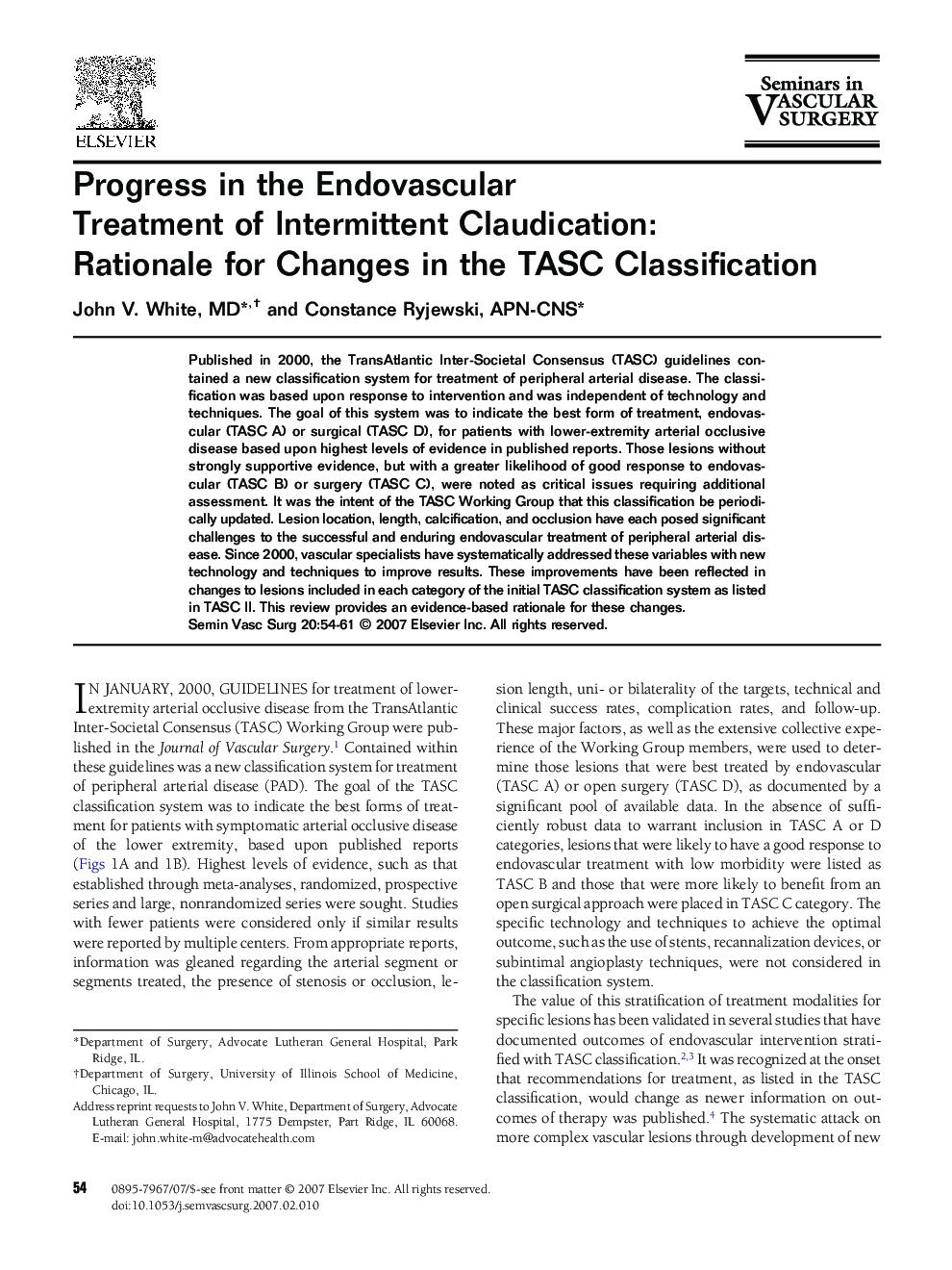| Article ID | Journal | Published Year | Pages | File Type |
|---|---|---|---|---|
| 3026472 | Seminars in Vascular Surgery | 2007 | 8 Pages |
Published in 2000, the TransAtlantic Inter-Societal Consensus (TASC) guidelines contained a new classification system for treatment of peripheral arterial disease. The classification was based upon response to intervention and was independent of technology and techniques. The goal of this system was to indicate the best form of treatment, endovascular (TASC A) or surgical (TASC D), for patients with lower-extremity arterial occlusive disease based upon highest levels of evidence in published reports. Those lesions without strongly supportive evidence, but with a greater likelihood of good response to endovascular (TASC B) or surgery (TASC C), were noted as critical issues requiring additional assessment. It was the intent of the TASC Working Group that this classification be periodically updated. Lesion location, length, calcification, and occlusion have each posed significant challenges to the successful and enduring endovascular treatment of peripheral arterial disease. Since 2000, vascular specialists have systematically addressed these variables with new technology and techniques to improve results. These improvements have been reflected in changes to lesions included in each category of the initial TASC classification system as listed in TASC II. This review provides an evidence-based rationale for these changes.
